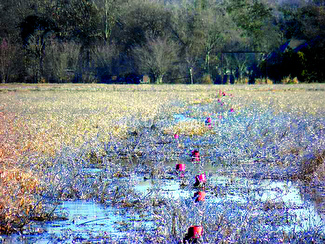Will deep freeze hurt crawfish?
Published 2:00 pm Thursday, January 30, 2014

- Like other crawfish ponds in the region, Stephen Minvielle’s was covered in ice this week after the arctic cold front passed through the Teche Area.
Recent freezing temperatures in the Teche Area could hinder the growth of crawfish, but officials said it is too early in the season to know the wintry weather’s full effects.
Stephen Minvielle, director of the Louisiana Crawfish Farmers Association, who has crawfish ponds in Iberia Parish, said crawfish become dormant when water temperature drops below 52 degrees, as it has in recent days.
The crawfish hibernate when the water reaches near freezing levels, he said, so they are eating and moving less. The life cycle rapidly slows down, Minvielle said, and they will not start to grow until the weather is warmer.
However, because the temperature in Louisiana rarely remains cold for extended periods, it is hard to predict how it will affect the harvest long-term, he said. There is no research or study to predict how the crop will fare, Minvielle said.
“When it’s so unpredictable it’s hard to model what the harvest is going to do,” he said.
Ray McClain, LSU AgCenter crawfish researcher, said several other factors that could affect the size and production of crawfish this season, including rainfall patterns as far back as last spring and temperatures in the fall.
Rain and snow melting in the Midwest will affect the wild-caught crawfish crop more than local weather, he said. If the rain and precipitation bring a lot of water down the Mississippi River it will help local wild-caught crawfish in and around the Atchafalaya Basin, McClain said. By law, 30 percent of the Mississippi River is diverted into the Atchafalaya River. When the Mississippi River rises or falls, it affects the Atchafalaya Basin.
The decrease in temperature will affect crawfish in ponds before it will affect wild-caught crawfish, he said, because the ponds are shallow.
McClain said the cold spell should have minimal long-term effects on the crawfish harvest this season, assuming temperatures start warming up soon so growth and activity can resume.
“It just slows everything down, but once everything warms up we should see a more normal resumption of the harvest,” he said.
The weather, McClain said, has decreased the chances of farmers catching crawfish in the early months and the peak harvest time likely will be a little later in the season. Farmers typically see warmer weather in mid-February, he said.
The crawfish supply typically peaks in April to mid-May when farm-raised production peaks and wild-caught crawfish are at a high, Minvielle said. When the season ends is determined by the heat, but most farms shut down in June.
Minvielle said he does not think the freeze could be catastrophic to the production. Overall production last year in Iberia and St. Martin parishes was not as fruitful as farmers hoped, but he said it should improve this year.





